How to Make an Effective Sales Email ? Free Templates
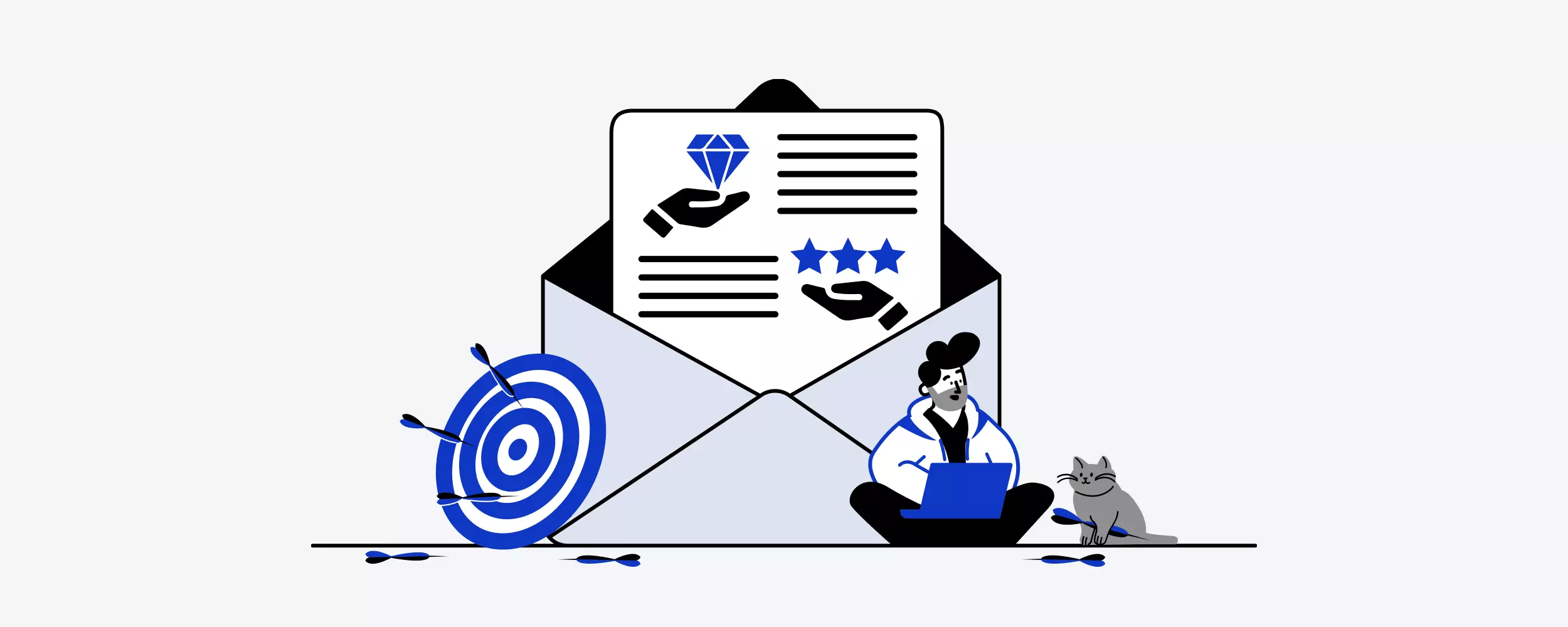
The dreaded sales email is the bane of many marketers. This simple message can make or break your email campaign, and it's easy to see why.
Email marketing delivers an average ROI of 4,200%, yet there are countless failures for every successful sales pitch. These trashed sales attempts include everything from the cliche cold email to the classic pushy sales pitch.
If you want your sales team to harness the power of this medium, then you need to know how to write a dynamic sales email.
In this article, we'll cover everything from learning how to personalize sales emails to what goes into making a compelling call to action. We'll also introduce you to some best practices to follow when crafting your email marketing campaign. Finally, we'll include three of our favorite sales email templates so you can immediately start using emails to pique your leads' interest.
How to Craft a Sales Email to Increase Your Response Rate
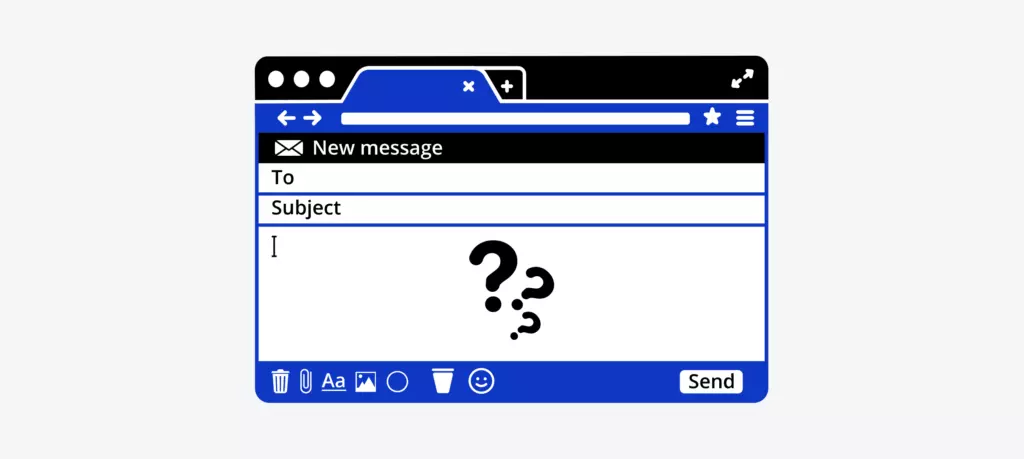
Email marketers know what it feels like to create something that very few people will ever see.
Average open rates differ depending on the industry, but the overall email open rate is only 20.94%. Given these odds, you need to develop a thick skin while you identify how to engage readers and drive up your response rates.
With this in mind, we've selected six areas to focus on that will help you with your lead generation. They include:
- Subject line
- Opening line
- Personalization
- Signature line
- Call-to-action
- Follow-up
By paying close attention to these six key segments, you can improve your sales process and funnel more high-quality leads to your sales reps. Collaborating with a specialized B2B SaaS SEO agency can further enhance your outreach by optimizing your content strategy and search visibility.
1. Keep the Subject Line Simple, Short, and Specific
35% of email recipients decide whether to open an email based solely on its subject line. In other words, most readers can differentiate between a legitimate offer and an email prospecting for leads.
When writing a cold email, avoid vague, pushy, or overly friendly subject lines. These tactics often drive away prospects before you even get a chance to deliver your sales proposal.
Instead, your subject line should:
- Reflect the body of your email
- Contain fewer than ten words
- Identify a pain point or refer to a mutual connection
For example, try creating a subject line around a common pain point such as "We can help reduce your cart abandonment rate." Alternatively, if a mutual friend provides an introduction, you can reference that connection in the subject line with something like "Roger Jones recommended I reach out to you."
Regardless of what angle you use, make sure to keep your subject line snappy and to the point.
2. Cut Straight to the Point With Your Opening Line
Your opening line should instantly state the essence of your email. Beating around the bush is a surefire way of ensuring the rest of your email goes unread or even potentially ends up marked as spam.
Tactics to try when writing an opening line include:
- Open with a question
- Reference a specific event or relationship
- Mention a pain point
Lines such as "How can your business reach (industry target)?" invite the reader to seek an answer to the question. If you prefer, you can mention a specific event or relationship in your intro. For example, "Congratulations on (company milestone)," or "I saw that you know (mutual connection), I would love to set up a phone call with you to discuss (pain point)."
Whatever you do, do it quickly. Salespeople waxing poetic is a common email mistake, but it's also an easy fix. Cut to the point and convert more leads with your sales emails.
3. Personalize Your Messages When Possible
It pays to personalize your sales emails. Marketers report a 760% increase in sales revenue from campaigns that use segmented and targeted emails. With such returns, you should take every opportunity you can to customize your email campaign to the recipient.
You can personalize your email messages in several ways, including:
- Segmenting your audience
- Treating sales professionals as real people (because they are!)
- Mentioning your prospect's name
Start by segmenting your audience into groups based on their location, age, browsing history, or interests. For example, you could send specific emails to people who visit one of your landing pages.
If possible, mention your prospect's name in your email. Emails with a personalized subject line receive a 26% boost in their open rate, which is more than enough reason to take the time to get to know your potential customers.
4. Update Your Sign-Off
Avoid using generic terms in your email signature, such as "sales rep" or "sales team at (your company name)." Remember, 68% of people consider the "From" when deciding whether to open an email, so put a personal touch in your sign-off. A long cluttered one will not win you any admirers. Instead, it should be short, neat, and professional while also letting people know that you're a real person and not just some robot.
A professional signature should include:
- Your name and company name
- Your phone number
- A link to a social media account of your choice (LinkedIn, Facebook, etc.)
Avoid using unnecessary images or quotes. You want your signature line to make it easy for prospects to give you a quick call, not figure out your star sign or learn about your favorite author.
5. Use One Clear Call-to-Action
Many rookie marketers make the mistake of putting too many calls-to-action (CTAs) in their sales emails. They fall prey to the notion of quantity over quality and grow frustrated when their cold outreach emails fail to generate substantial results.
If you want to write effective sales emails, you need to choose one clear CTA per message. Emails with a single CTA increase clicks by 371% and sales - by 1,617%.
Possible calls-to-action include:
- Sign-up for an email list
- Start a free trial
- Download a useful document (guide, template, or e-book)
You want your CTA to grab the prospects' attention and compel them to provide you with contact information, visit your website, or make a purchase. Your CTA should create a sense of urgency, be clearly visible, and cut straight to the point. Keep it informal and use first-person, action-oriented language that is impossible to misinterpret.
If possible, try personalizing your CTA, as personalized CTAs perform 202% better than basic CTAs. If your CTA is a link then consider a custom URL shortener like Rebrandly. Seeing a branded link can increase your click through rate. Applying these principles will elevate your CTA game and drive up your response rates.
6. Leave the Door Open for a Follow-Up
There is no such thing as the perfect sales email. Even when you follow all the best practices, it's tough to get your email opened by the right person. But that doesn't mean you just give up and move on.
On the contrary, to get the most out of your campaign, you need to make sure that it's easy for a recipient to follow up on your outreach email. Instead of using a no-reply email address (ouch!), or a generic sales email, send your messages from a real person's email address.
Now that we've covered the five critical aspects of a sales email, it's time to discuss some tips for you to follow when crafting your email marketing campaign.
Sales Email Best Practices
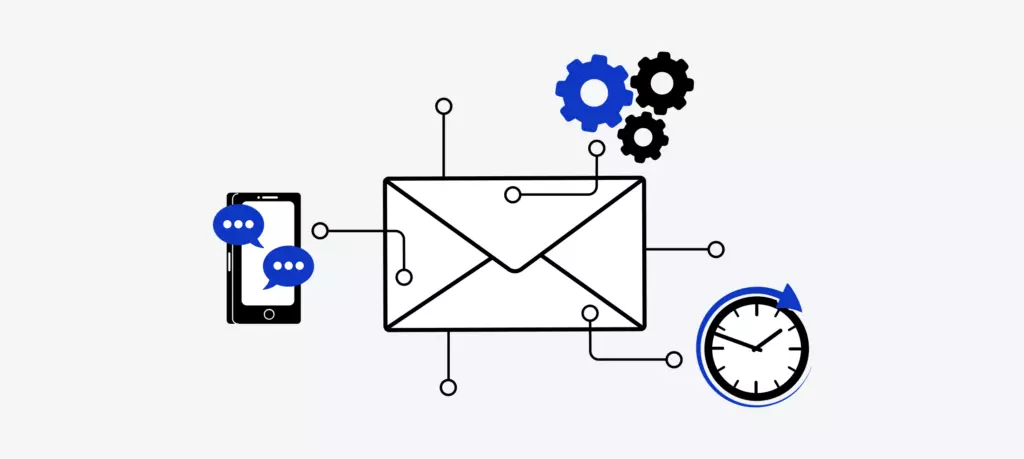
Leverage Automation to Simplify the Email Process
To improve your ROI, you can try leveraging an email management tool for salespeople. These automation and sequencing tools simplify creating, scheduling, sending, and tracking emails. Combine this with white label marketing services to deliver expertly crafted campaigns under your brand, enhancing efficiency and client impact effortlessly.
For example, one common use case for automation is a lead nurture campaign. Instead of manually sending the same email sequence to each new lead, use an email management platform or a cold email software tool to create a workflow. Each new prospect that is added to your database will receive the same emails, personalized with their information.
Automation tools make your email campaign more efficient and increase qualified leads by 451% by limiting errors and streamlining your workflow.
Popular SaaS email automation platforms include:
- HubSpot
- Mailchimp
- Campaign Monitor
- Constant Contact
- GetResponse
Tools such as HubSpot's drag and drop email builder make creating a sales email quick and easy. Use it to design emails, target your prospects, personalize conversations, and optimize your campaign.
Whichever tool you decide to use to automate your email marketing, take the time to research and see if it provides the right mix of features for your business.
Keep Track of Communication in a CRM
If you do not currently use a customer relationship management (CRM) tool for your email marketing campaigns, it could be just the thing you're missing to take your sales email game to the next level.
Whether you work for a small business, startup, or multinational corporation, a CRM with sales tracking software is just what your sales team needs. With a CRM, you can keep track of communication with your prospects and improve your lead generation.
CRMs allow you to:
- Segment your prospects
- Score leads
- View your communication history
- Schedule follow-ups and automate workflows
- Quick call leads and schedule meetings
The customer experience is a crucial element of the sales journey, which means timely communication is essential to nurture your leads. CRMs allow your sales reps to focus on specific, high-quality prospects at the right time, thereby increasing conversions and sales.
In addition, a CRM makes it easier to schedule company meetings and organize your workflows. Using a CRM for your email campaign can enable you to try alternatives to standalone scheduling systems like Calendly and simultaneously manage your customer and sales team communications in one program.
Send Emails at the Right Time
In the realm of email marketing, it's not just what you send that counts, but when you send it.
Research suggests that emails sent around 10 am, 1 pm, and 6 pm receive the best click-to-open rates. In addition, Tuesday is the best day for email open rates, followed by Monday and Wednesday, then Thursday, Friday, Sunday, and finally Saturday. However, you can't simply bet on these averages. If every marketer did that, all sales emails would go out Tuesday morning. Your audience is unique, and the best time to schedule your emails will be unique to your audience.
To identify the best time to send sales emails to your prospects, consider:
- Your target demographic and where they live.
- The devices your prospects use. Mobile users tend to be more active later at night, which could change the timing of your emails.
- Your own customer data rather than a case study
If you're trying to reach a specific audience, take time to research their habits. What industry are you targeting? What are their work hours? When do they typically take lunch? These questions can help guide your scheduling activities.
Whatever you decide to do, make sure you rely on your own sales data and run A/B tests to determine the best times and days for your different sales emails. You may find that subscription emails get better open rates at certain times, while welcome emails receive better rates at other times.
At this point, we've covered the five key areas to focus on when writing a sales email and three best practices to consider when you create your email campaign. Next, we'll present you with three of our favorite templates and email examples you can use for inspiration.
3 Sales Email Templates and Examples
The Welcome Email
The welcome email is one of your first opportunities to interact with prospective climates. Whether you got a new visitor to your site, someone subscribed to your newsletter, or you just converted a new customer, it's vital to nail your welcome email and make an excellent first impression.
Here's a classic example you can use if someone subscribes to your newsletter:
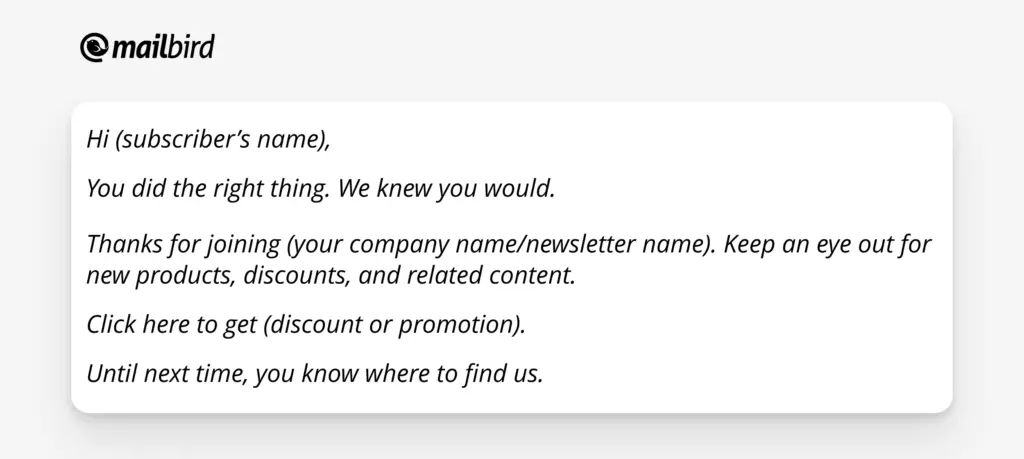
Keep your welcome email short, informal, and personal. If possible, mention your prospect's name, and use wit and humor to create rapport (if appropriate for your brand). Include a clear CTA such as a discount, link to a lead magnet, or share your social media profile.
Magic Spoon's welcome sales message is an excellent example of a fun and efficient welcome email. It uses wit and quirky visuals to engage the reader and entices you to make a purchase by providing you with a discount code for your first purchase.
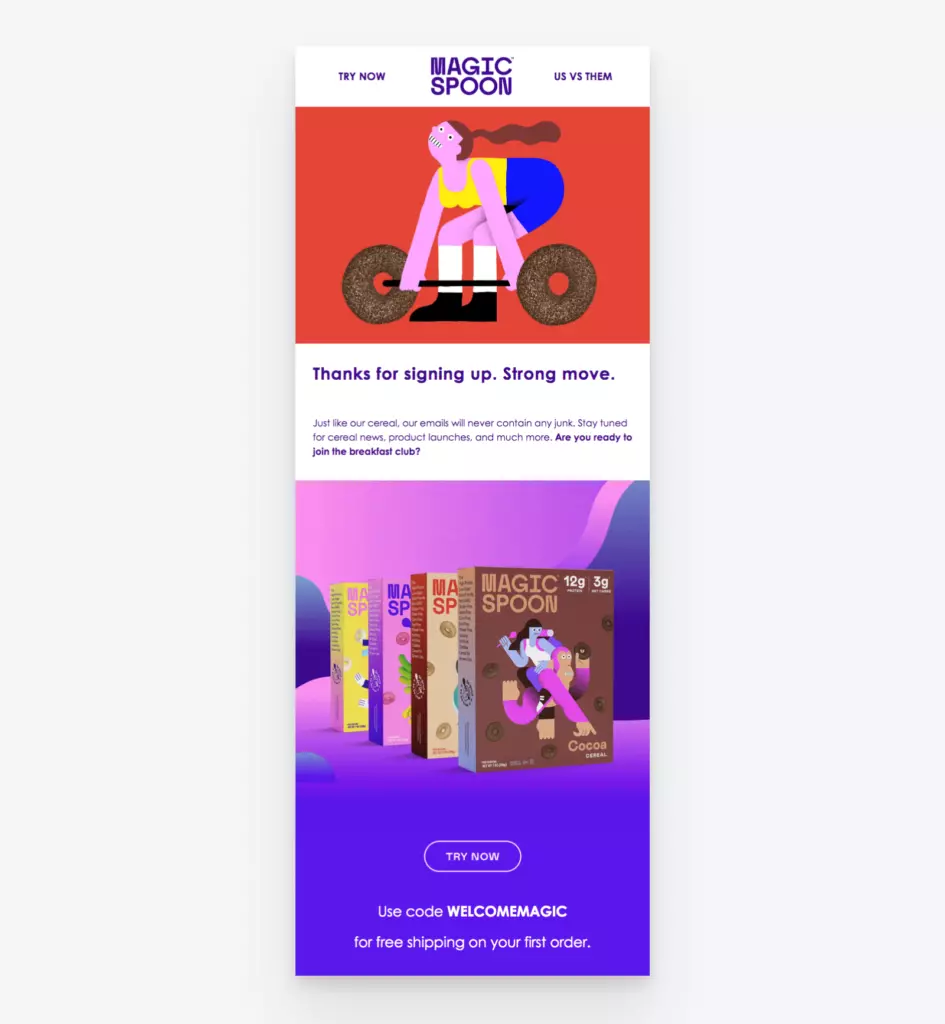
The Re-Engagement Email
The ugly stepsister to the welcome email, the re-engagement email, is nonetheless an essential tool in your toolbox. Use it to prevent leads from walking out your door, drive engagement from idle subscribers, or provide you with data you can use to score leads and purge unlikely prospects.
Here's an example of a re-engagement email you can use if it's been a while since a customer opened one of your emails.
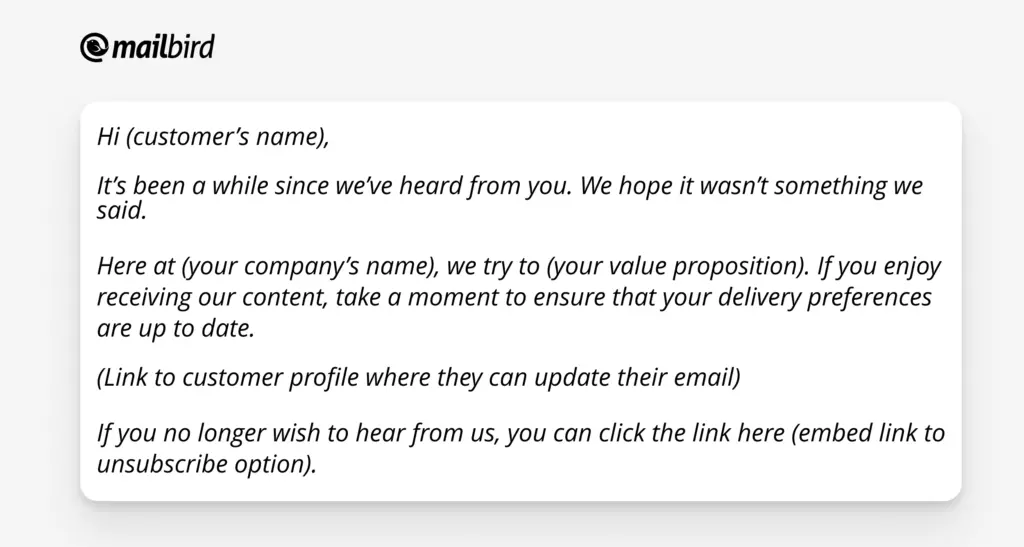
Express sincerity with your prospect and try to connect with them on a personal level. Remind readers of your value, and provide them with a chance to continue receiving your emails.
Paul Mitchell's whimsical take contains everything you're looking for in a re-engagement email. It plays on its readers' emotions without being overly pushy and provides an option for the prospect to continue receiving content.
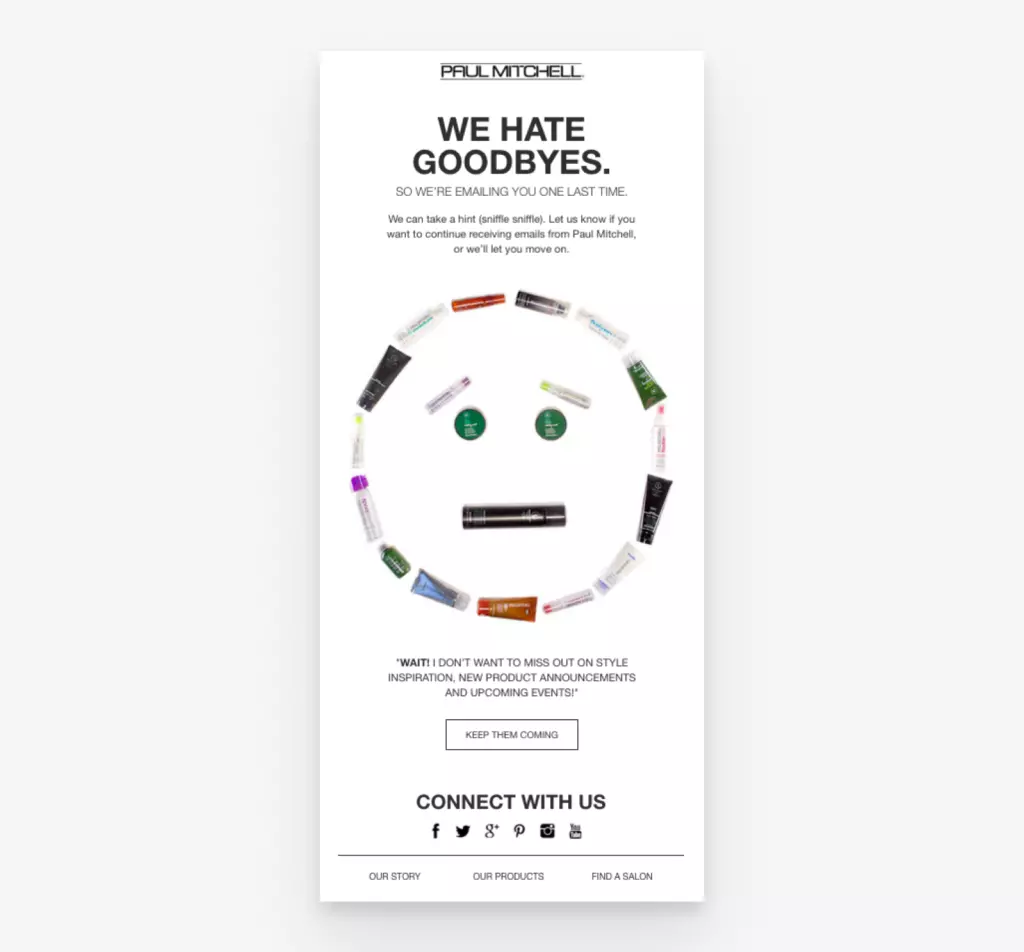
The Cold Pitch Email
At some point, you're going to have to write a cold product or sales pitch to a new prospect. When that time comes, you'll be ready, so long as you follow the advice we've laid out in this article.
Here's an example of a cold email combining some of the tactics and best practices you learned:
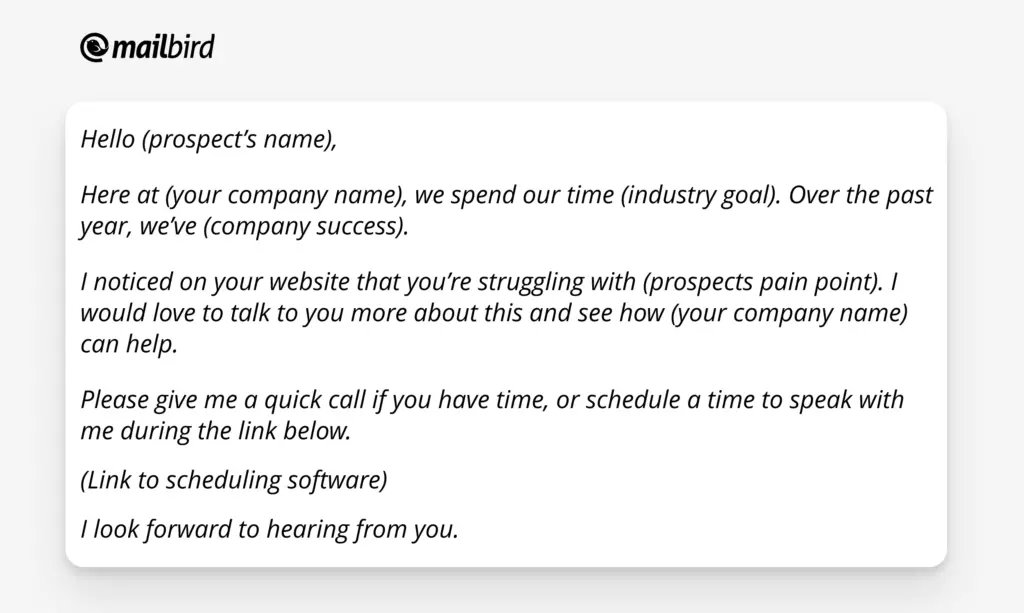
This template introduces the prospect to your company, highlights your value proposition, and identifies a pain point that you can solve. It's professional yet personal, short without being pushy, and provides the prospect with the opportunity to call now or follow up with you at a convenient time.
Bryan Harris's cold pitch to Ginny Mineo at HubSpot ranks as one of the best examples of a cold email out there. In his email, Bryan compliments the prospect, provides a mutual connection to establish a rapport, and provides value without ever coming across as pushy. He nurtures the lead while maintaining an air of helpfulness and authority.
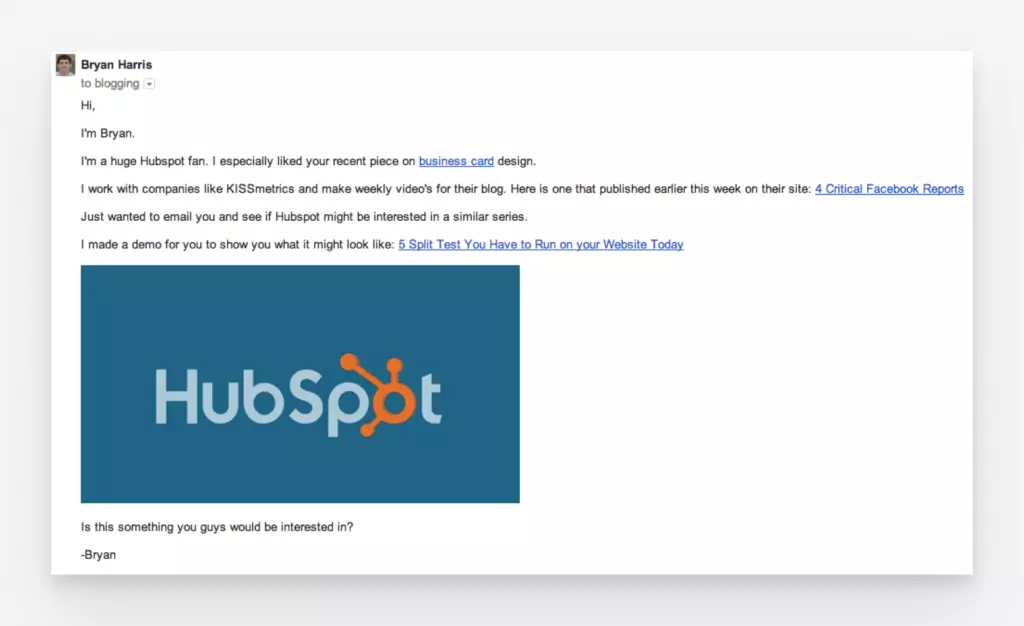
Why You Need to Know How to Write a Sales Email
Ultimately, the best way to write a sales email is to spend the time getting to know your prospects. When you can connect with their needs and personalize the message, you'll be well on your way to crafting successful sales campaigns. However, that doesn't mean you should stop here.
Writing a successful sales email is only one part of running a successful email campaign. To get the most out of this knowledge, you'll need to apply it to your prospects and run tests to determine the best results for your business.
Now all you need to do is find some prospects so you can test out your new skills.
